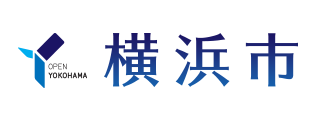- Yokohama-shi Top Page
- Health, Medical and Welfare
- Health and Medical Care
- Municipal hospitals
- Yokohama City Apolexy and Spinal Nerves Center
- Hospital Overview
- Information on facilities
- Stroke and Neurospinal Center, which can be seen in about 3 minutes
Here's the text.
Stroke and Neurospinal Center, which can be seen in about 3 minutes
Last Updated December 3, 2024
- Treatment of stroke
- Treatment of neurological disorders
- Treatment of knee pain
- Treatment of back pain and neck pain
- Cardiovascular disease
- Rehabilitation
- Those who are worried about dementia or forgetfulness
- Introduction of Pamphlets
Our hospital was opened in 1999 as a specialized hospital for stroke and neurological diseases. In order to respond to the aging of society, we established Orthopaedic surgery, which specializes in the treatment of hips and knees.
Treatment of stroke
Symptoms may be stroke…
Suddenly, if you experience symptoms such as falling only half of your face, poor arms, poor speaking, dizziness, severe headache, etc., you may have a stroke.
It is also possible to have a stroke if a minor headache or something continues to look double on a daily basis.
There is such a treatment.
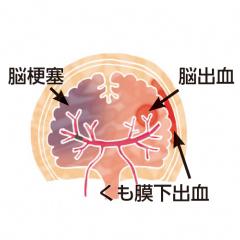
Cerebral infarction is caused by clogging of blood vessels. It can be treated with t-PA therapy to dissolve blood lumps (thrombos), which cause clogging of blood vessels, or intravascular treatment in which blood clots are removed from blood vessels using a catheter tube.
Brain hemorrhage and subarachnoid hemorrhage can be caused by broken bumps in blood vessels and blood vessels. Treatment with hemostasis and drugs that lower blood pressure, and treatment with surgery.
Recently, there is treatment to remove the cause of the stroke before it becomes a stroke. In particular, measures to prevent subarachnoid hemorrhage, which has a high mortality rate, include coil embolization, which packs metal threads on blood vessels, and clipping surgery to prevent blood from flowing across the root of the bump.
It supports stroke treatment 24 hours a day, 365 days a year!
In our hospital, Neuroscience Internal medicine and Neurosurgery cooperate to select appropriate treatment methods for each patient, regardless of Medical consultation fee.
If you want to know more about stroke, what kind of disease is stroke? Please see (PDF: 1,533KB).
Treatment of neurological disorders
About dizziness treatment
Are you having trouble with dizziness symptoms that seem to be rolling around or floating in the air? There are various causes of dizziness, such as benign seizures ( dizziness and stroke. In this hospital, doctors of the Japanese dizziness equilibrium ( Medical Association dizziness consultants play a central role in providing accurate diagnosis and appropriate treatment using specialized equipment.
If you want to know more about dizziness treatment, please refer to dizziness treatment.
Neurology incurable disease and its treatment
Neurology incurable disease refers to diseases in which physical functions deteriorate due to abnormalities in the brain, spinal cord, peripheral nerves, etc. are particularly difficult to treat and cure.
Designated incurable disease, designated by the incurable disease Law, is eligible for medical expenses grant depending on the characteristics and severity of the disease. Typical examples include Parkinson's disease, spinal cord cerebellar degeneration and ALS (Amyotrophic lateral sclerosis).
In addition to diagnosis and treatment of incurable disease, theincurable disease Medical Support Hospital in Kanagawa Prefecture provides home support such as gastric ventilation and artificial respiration management, and accepts patients in emergencies.
If you want to know more about Neuro incurable disease, please see About Neuro incurable disease.
Treatment of knee pain
I'm here. A person whose knee hurts
It is said that there are 25 million people with knee deformation nationwide, and 8 million people complain of pain. Difficult walking due to knee disease is a major factor in locomotive syndrome.
Early detection of knee disease and appropriate treatment are required to extend healthy life expectancy.
※Locomotive syndrome refers to a condition in which functions such as standing, walking, and sitting are reduced.
There is such a treatment.
If the knee deformation is light, oral medicine such as analgesics can reduce the pain. In addition, regular hyaluronic acid injections can relieve pain.
Even if the symptoms progress, you can still receive "artificial joint replacement". In Japan, nearly 100,000 surgeries are carried out annually. Recently, the type of artificial joint has increased, and it has become possible to create joints that suit each individual. In addition, we also perform surgery to preserve the knees called "high-level tibial bone skeletal surgery" according to symptoms such as joints that warn the inside of the knee or do not extend.
If you want to know more about knee joint diseases, please refer to Orthopaedic surgery's Treatment of knees.
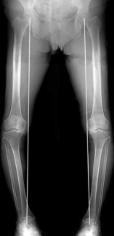 Osteoarthritis
Osteoarthritis
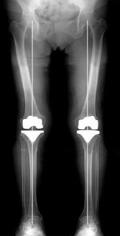 After total replacement of artificial knee joints
After total replacement of artificial knee joints
Treatment of back pain and neck pain
What is the cause of back pain?
There are various causes of back pain, and in fact, about 80% of back pain, which is not known. Many back pain can be cured by rest or medication, but some back pain should not be left unattended.
Spinal stenosis is a disease in which the nerve path called the spine tube in the spine becomes narrow due to degeneration, and the nerves are squeezed. In many cases, it is asymptomatic if you stay still, and if you continue standing posture or walking, numbness and pain will appear, and it will be a little easier when you rest.
"Fractures unintentionally" refers to osteoporosis vertebraic fracture Be careful if you are an elderly person and have strong back pain when you are in the middle, stretch your back, or have a light shyness.
There is such a treatment.
There are many different types of drugs and block injections to reduce nerve inflammation, reduce pain transmissions, and reduce pain.
Surgery includes decompression techniques to reduce pressure on the nerves by shaving the degenerative hard tissue around the nerve, correctional fixation techniques to straighten the bent spine using metal, and balloon formation techniques to put cement into the crushed part of fractures associated with osteoporosis.
There are inspection equipment with low exposure doses.
With the sterEOS imaging system, you can grasp the condition of your back in detail with a low radiation dose while standing.
If you would like to know more about the treatment of back pain and neck pain, please refer to Orthopaedic surgery's Treatment of Spine spinal cord.
Cardiovascular disease
What is cardiovascular disease?
A disease in which the heart and blood vessels, which are organs that circulate blood throughout the body, do not work properly, such as hypertension, heart disease, cerebrovascular disease, aneurysm, etc.
It is classified as a syntax. Cerebrovascular disease involves heart disease with a high probability.
What is heart rehabilitation?
Heart rehabilitation (heart rehabilitation) is a comprehensive activity that aims to help patients with heart disease restore physical strength, regain confidence, return to comfortable home life and social activities, and prevent recurrence and re-hospitalization. It is a program.
Contents include exercise therapy, learning activities, life guidance, consultation (counseling), etc.
Patients with heart failure, myocardial infarction, angina, after heart surgery, etc. have reduced the function of the heart, and their ability to regulate the body as they continue to live in rest.
As a result, you cannot do strong activities immediately after you leave the hospital, and you are worried because you do not know how much you can do.
For these, it is helpful to perform appropriate exercise therapy in heart rehabilitation.
In addition, we provide dietary guidance and smoking cessation guidance with the aim of preventing the progress of arteriosclerosis, which causes heart disease.
In heart rehabilitation, many specialized medical professionals, such as doctors, physiotherapists, nurses, and pharmacists with specialized knowledge, propose and implement effective rehabilitation programs tailored to each patient's condition.
If you want to know more about cardiology, please visit Internal medicine Cardiology.
Source: Japan Society of Cardiac Rehabilitation
(Partially modified) https://www.jacr.jp/ (external site)
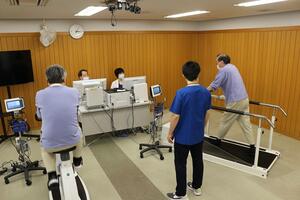
Rehabilitation
What kind of goal do you set?
Patient diseases include stroke, Orthopaedic surgery disease, and neurological disease. What kind of life you want to live is also different. In our hospital, experienced specialists in Rehabilitation and staff are working together to develop rehabilitation plans for accurate goals.
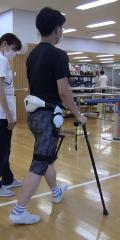 Walking training using robots
Walking training using robots
Upper limb training using robots
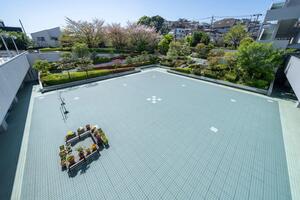
It is available for walking training in a spacious garden.
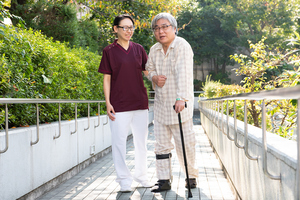
Walking training
I will rehabilitate with an eye on life after discharge.
Convalescent rehabilitation ward
We are actively accepting those who have undergone surgery or acute treatment at other hospitals in the convalescent rehabilitation ward. 365 days a year, professional staff will support the patient.
Regarding transfer, please tell the hospital you are currently in the hospital that you are considering this hospital. Doctors and medical social workers will consider the transfer of hospital.
Early rehabilitation from the bedside
Rehabilitation is provided as short as possible for patients transported by emergency due to stroke, etc. from the day.
If you would like to know more about rehabilitation, please refer to the Rehabilitation, the Rehabilitation Department, and the convalescent rehabilitation ward.
Those who are worried about dementia or forgetfulness
Do you have any of these symptoms?
- I completely forget what happened recently
- More and more things are lost or left behind.
- I got angry at the little things.
Dementia is a disease in which nerve cells are reduced and the brain is atrophy. It is important to get a diagnosis at an early stage and start treatment.
Those who want to visit a specialized outpatient clinic for forgetfulness
We carry out specialized outpatients every Monday for those who are suspected of having dementia for forgetfulness.
After about 30 minutes of careful treatment, first visit (Shoshin) conducts brain imaging, blood and psychology tests and sends diagnostic results to the GP.
Because of the appointment system, if you would like to have a consultation, please apply by phone or from our hospital.
If you want to know more about dementia and forgetfulness, please see the forgetfulness outpatient department.
Introduction of Pamphlets
We distribute pamphlets and leaflets that summarize the characteristics of our hospital introduced on this page at hospitals and events at our hospital.
If you are interested, I would appreciate it.
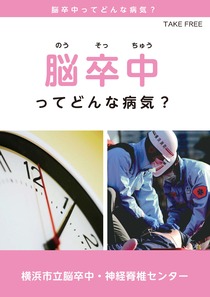
What kind of disease is a stroke? (PDF:1,533KB)
What kind of disease is osteoarthritis? (PDF:2,391KB)
What kind of disease is scoliosis? (PDF:4,165KB)
You may need a separate PDF reader to open a PDF file.
If you do not have it, you can download it free of charge from Adobe.
![]() To download Adobe Acrobat Reader DC
To download Adobe Acrobat Reader DC
Inquiries to this page
Stroke and Neurospinal Center Regional Collaboration General Counseling Room
Telephone: 045-753-2500 (Representative)
Telephone: 045-753-2500 (Representative)
Fax: 045-753-2894 (direct)
Page ID: 884-362-105

